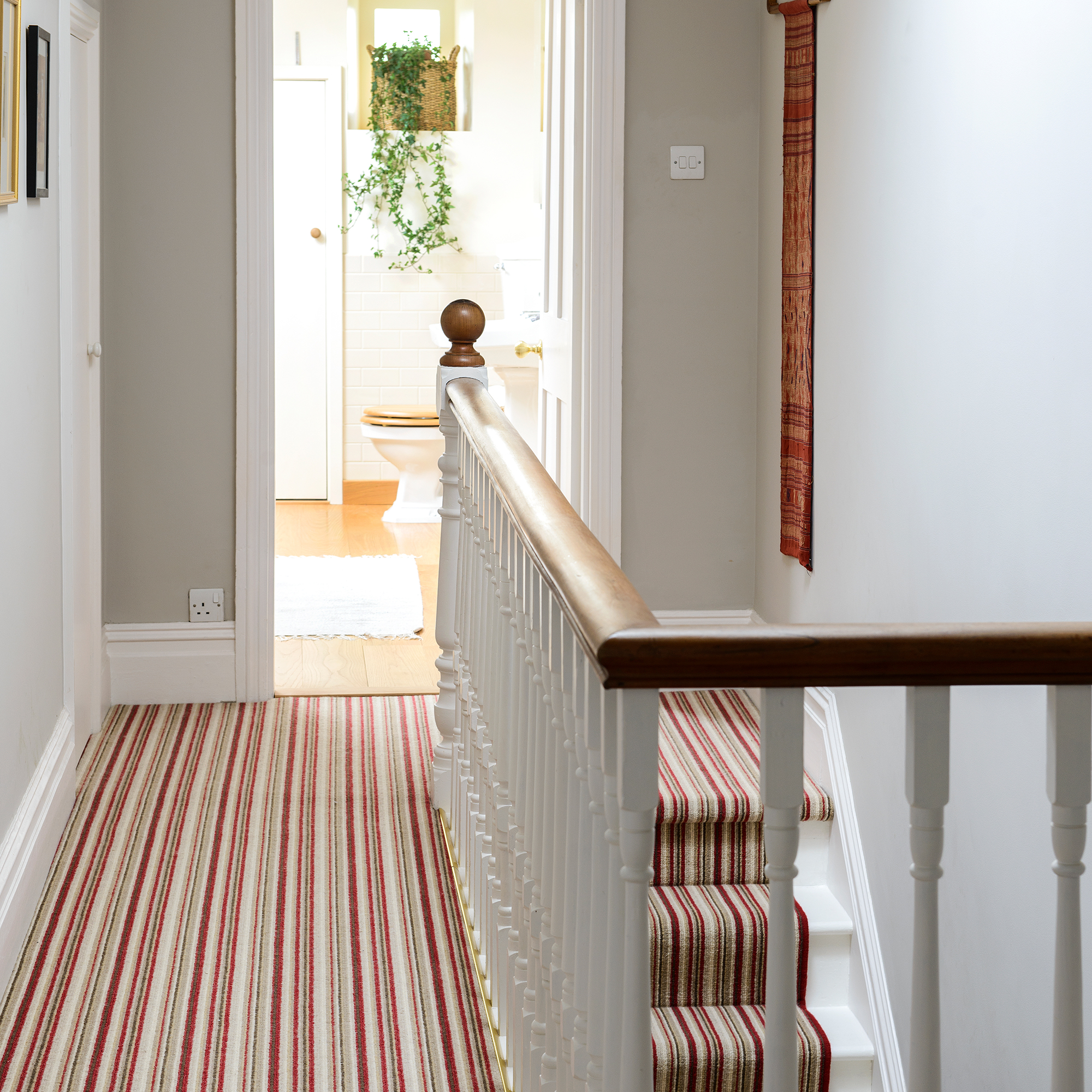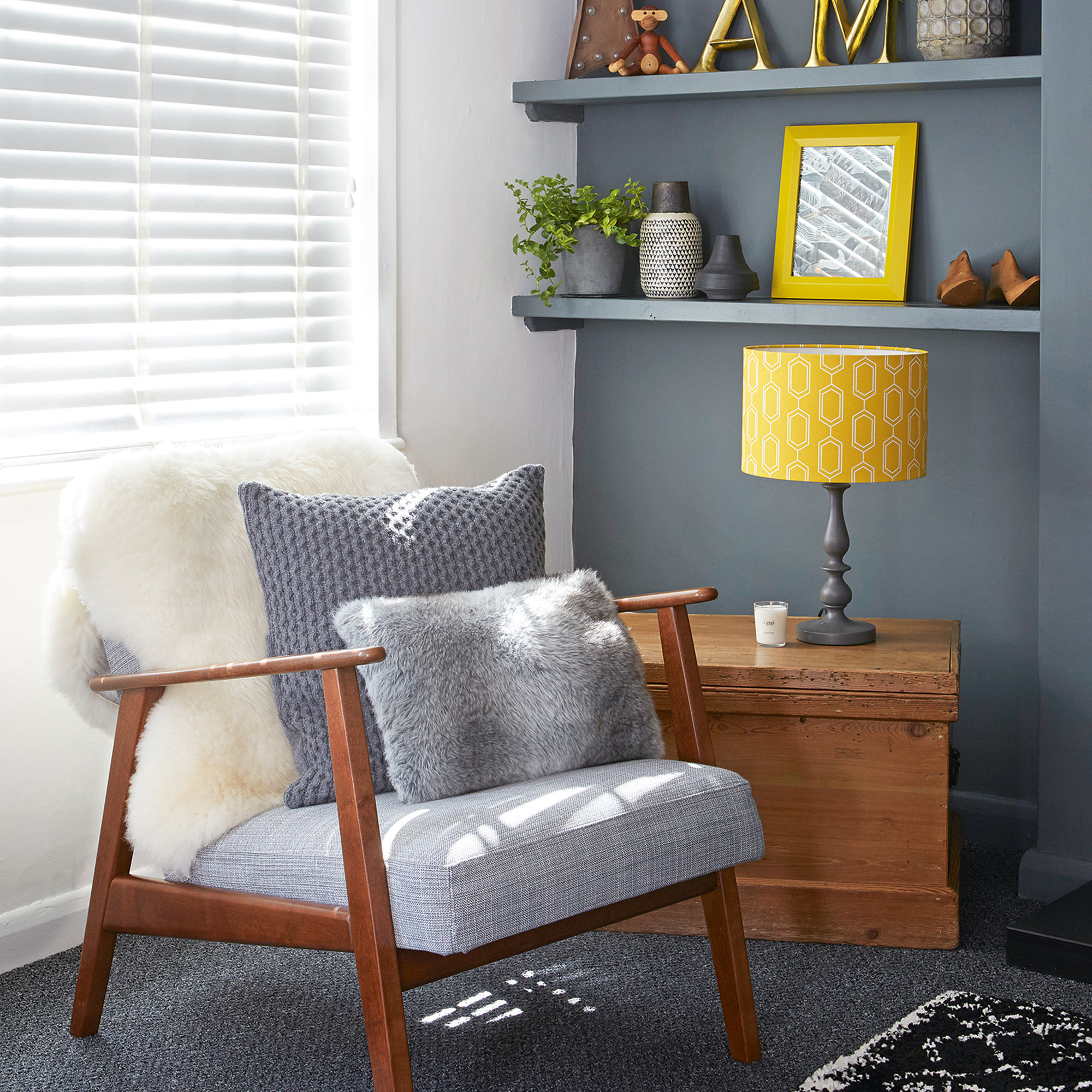How to paint skirting boards with carpet in 5 easy steps – refresh your home without ruining your carpet
Protect your carpet with this cheap store cupboard essential


Jenny McFarlane
You might think that it’s impossible to paint skirting boards without ripping up your carpet or accidentally painting dodgy lines around the perimeter of your room, but we’ve got some good news for you. It’s very much possible!
It's always a good idea to paint your skirting boards every so often, but when it comes to home decor ideas, your skirting boards are probably fairly low down on your priority list. After all, it’s no secret that they offer more substance than style. But as they’re often forgotten, skirting boards can quickly fall into disarray and look old, tired, and dirty.
We know what you’re thinking, though. Painting skirting boards is best done when you’re replacing your carpet, right? And while there’s no doubt that this is the opportune time to paint skirting boards, that doesn’t mean that it’s the only time. This is how you can paint your skirting boards without ripping up your carpet.

‘When painting skirting boards, the last place you want the paint is on your carpets,’ explains Emma Bestley, Co-Founder and Creative Director of YesColours. Thankfully, painting skirting boards when you have carpet in place is easier than you’d think. Just follow these steps, and you’ll be able to refresh your rooms in no time.
'Preparation is key to protecting your carpet and flooring when painting, and the best way to do so is by putting down dust sheets and taping them down as close to the skirting board as possible,' adds Johanna Constantinou, Interior trends expert at Tapi Carpets and Floors.
This is the best way to paint skirting boards when you have carpet.
What you’ll need
- Masking tape - like this Frog Tape Orange Masking Tape from Amazon
- Masking film - you can buy a bundle of painter's tape and film on Amazon.
- Skirting board paint - like this Dulux Quick Dry Metal & Wood Paint from B&Q
- Bucket
- Soap and water
- Sponge
- Paintbrush (these Hamilton Prestige round brushes from Amazon are ideal for cutting in and for fiddly jobs)
Step-by-step

1. Clean your skirting boards
Done correctly, painting skirting boards is an easy DIY job that can be done in just a few hours. But if you want to refresh your skirting and leave it looking as good as new, you need to do something first.
Sign up to our newsletter for style inspiration, real homes, project and garden advice and shopping know-how
‘Like any DIY, prep is key - so make sure you have cleaned your skirting boards and hoovered the carpet,’ says Emma.
'You should clean your skirting boards before you begin painting so no dirt or dust gets stuck under the paint – use a simple solution of sugar soap in warm water for this. You can also put a line of painter’s tape above the top of the skirting board to avoid getting any splashes on your newly painted walls,' suggests Johanna.
One of the easiest ways to clean your skirting boards is to use a simple concoction of warm water and soap. You can then use a sponge to wipe over the skirting boards and remove any dirt or debris. Or you could use sugar soap like Everbuild's from Amazon as a cleaning alternative.
2. Lay the masking tape
‘The easiest way to protect your carpet from paint without having to pull the carpet up is with masking tape,’ explains painting and decorating expert Joshua Evans at PriceYourJob.co.uk.
This will serve as a buffer between the carpet and the paint, but it’s important you choose the right kind of tape - as some masking tapes will damage the carpet.
'If you are using a small brush then masking tape alone such as FrogTape will be sufficient - it uses Paint Block Technology to keep paint out and lines sharp,' says Jason Burns of FrogTape.
When you have your tape in hand, stick down wide strips along the edge of the skirting board, pushing the tape as far into the edge of the carpet as possible. Ideally, there shouldn’t be any gap between the tape and the skirting board.
Of course, it’s also a good idea to do the same thing on top of the skirting boards so you also protect your wall paint in the process.
3. Prepare the skirting board
Now that you've laid the tape and cleaned your skirting boards, it's important to prepare the boards' surface before painting.
'Before you begin taping or dusting, review the quality of the existing paintwork—does it need sanding or priming? Is the existing paint stable? Painting on top of flaking or poorly painted woodwork won’t miraculously hide what’s underneath,' explains Anna Hill, Brand Director and Colour Consultant at Fenwick and Tilbrook.
'Sand your skirting boards so that you can apply fewer coats. Doing so allows the paint to stick to the surface easier - it will also leave you with a much smoother finish,' explains Johanna.
'Apply a layer or two of paint primer to your skirting boards. Try not to overload your brush by brushing it against the rim of the paint tin or tray. This is a good way to practice before you begin painting, to ensure you don’t get any drips or smears.'

4. Start painting
When your tape is in place, you’re then free to start painting. Simply grab your paintbrush and your paint and go wild. Be careful when you do this, though. While the masking tape will protect the carpet up to a point, it won’t protect your carpet from any Jackson Pollock-inspired paintbrush flicks.
'Paint the top and the very bottom of the skirting board carefully with a 2” brush – this is the part that requires a steady hand! Then fill in the middle and leave it to dry for 2-4 hours. Follow the same process with your chosen paint, making sure you leave your dust sheet in place until the paint is completely dry,' explains Johanna.
Depending on the finish you want, you might need to paint a couple of coats of skirting board paint. If you don't know what paint to use on skirting boards and which to avoid, Sophie Smith, Zhoosh Paints explains, 'Choosing the right paint and using the right amount is very important.'
'As gloss and eggshell paints are thick, there is sometimes the temptation to apply more paint in one go, but we would advise against this as it can still drip after you have moved on to the next section. Use two thinner coats, take your time, and the results will look a lot more professional.'
'You also want to make sure you don’t overload your paintbrush with too much paint. Instead, use a small, angled brush and apply thinner, controlled brushstrokes to help reduce the risk of drips,' adds Anna.
'For narrow skirting, always use a brush instead of a roller. However, for deeper skirting, a foam mini roller or one designed for eggshell finishes will work well.'
Then all you have to work out is a creative skirting board colour to paint them.

5. Peel back the tape
No matter whether you opt for one coat of paint or two, knowing when to remove painter's tape is crucial. You should always wait until the paint is fully dry before peeling back the tape.
Pulling it off too early could result in paint smudges or spills, and long strands of wet masking tape are a recipe for disaster - especially when you’re trying to protect your carpet.
'Allow the paint to be touch-dry and carefully remove all your tape at a low angle to avoid pulling any of it off,' explains Anna.
'For regular skirting boards, you want to follow the same as above and ensure you use dust sheets to prevent paint from going onto the carpet.'
But when you’re confident that the paint has had enough time to dry, you can then peel it back and admire your handiwork.
'If you're concerned about drips, then using a wallpaper scraper that you can slide along the skirting as you paint will allow you to catch any excess before it hits the carpet,' adds Anna.
FAQs
How do you you mask carpet on stairs for painting?
We asked Anna Hill, Brand Director and Colour Consultant at Fenwick and Tilbrook for her expert advice.
'For carpeted stairs, using decorators tape properly will prevent paint from seeping onto the carpet fibres. Start by cleaning the area - vacuuming and dusting the skirting board and carpets to remove dust and debris is essential to ensure the tape sticks down properly,' explains Anna.
'You then want to use a really wide, low-tack masking tape and press it firmly along the edges of the skirting board. To create a tight seal, use a putty knife or tool with a blunt edge to press the tape down into the carpet pile.'
How do you paint skirting without lifting carpet?
It’s incredibly easy to paint skirting boards without lifting the carpet, as you just need some masking tape at your disposal. When you have this, you can lay a wide strip along the edge of the skirting board, pushing right into the edge as you do so.
When you’re confident that the tape is secure, you can then go ahead and start painting. And when the paint is dry, simply pull up the tape.
Is it better to remove carpet before painting?
This ultimately depends on what you’re painting. If you’re looking to paint skirting boards with carpet in place, it’s relatively easy to simply protect the edges using masking tape.
However, if you’re painting numerous walls and ceilings, it’s probably a better idea to either pull up the carpet or cover your carpet in a protector.
Most professional painters and decorators will use coverings, such as dust sheets or products like this GoodHome Self-adhesive Protector Roll from B&Q.
There you have it, that's how to paint skirting boards with carpet for a professional look without damaging your flooring.
But 'remember to take your time and avoid rushing the job to achieve a more professional finish. Also, allow enough drying time before removing any tape or protective coverings to ensure a clean, crisp result,' advises Anna.

Lauren Bradbury has been the Content Editor for the House Manual section since January 2025 but worked with the team as a freelancer for a year and a half before that. She graduated with a Bachelor’s degree in English and Creative Writing from the University of Chichester in 2016. Then, she dipped her toe into the world of content writing, primarily focusing on home content. After years of agency work, she decided to take the plunge and become a full-time freelancer for online publications, including Real Homes and Ideal Home, before taking on this permanent role. Now, she spends her days searching for the best decluttering and cleaning hacks and creating handy how-to guides for homeowners and renters alike, as well as testing vacuums as part of her role as the Ideal Home Certified Expert in Training on Vacuums, having spent over 110 hours testing different vacuum models to date!
- Jenny McFarlaneSenior Digital Editor